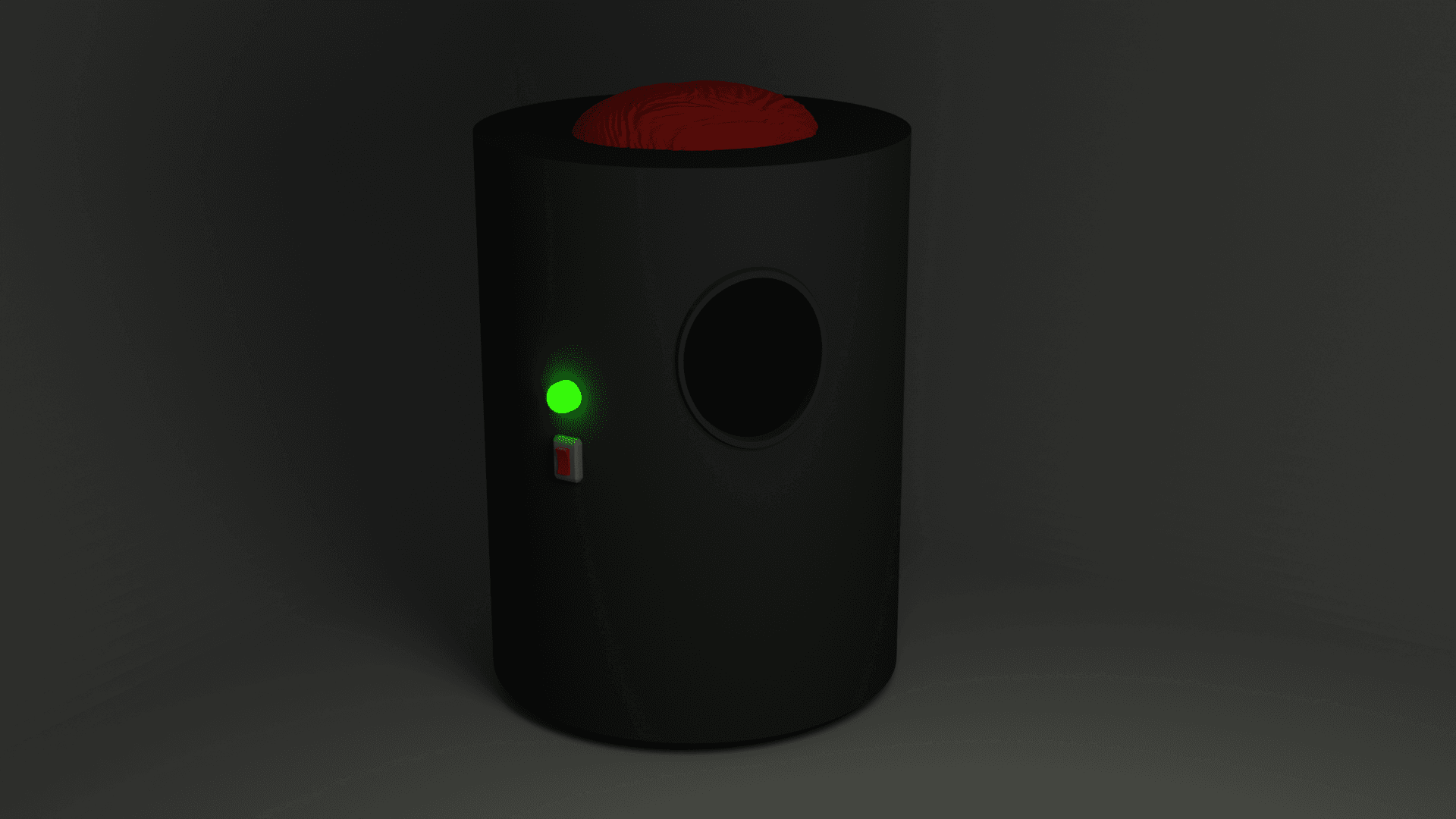Mission objective and functions of the mini-satellite
Two missions have been assigned to the mini-satellite. In the primary mission, one of our goals is to measure the ambient temperature. Data from the thermometer will be transmitted to a mobile application via FTP servers connected to our ground computer, broadcast by radio signal. The second parameter, pressure, is to be measured as part of the primary mission, which will be checked using a barometer, and the results will be sent to the application, as in the case of the thermometer.
The secondary mission involves landing and taking photographs of the surroundings. It also involves measuring parameters such as speed, position in space, altitude above the planet's surface, acceleration, and electromagnetic field.
Our entire mission is intended to simulate landing on an alien planet. The measurements and images collected can be used to find the best place on an unexplored planet with a dense atmosphere (details of the surface of planets with dense atmospheres cannot be seen in satellite images) where a rover could land. It is possible to create a fleet of CanSat satellites, which have the advantage of being inexpensive to produce. The use of such a satellite will allow for the best landing area for exploration vehicles to be selected, based on real and accurate data. The CanSat mission will be successful if the mini-satellite lands, takes photos and measurements (electromagnetic field, position, pressure, temperature) and the data is successfully transmitted to the application.

Design of the mini-satellite
Overview
Our CanSat will be designed and built to be launched by rocket to an altitude of approximately 2,000 meters, from where it will be dropped, initiating the probe's operation. The satellite's descent with its parachute deployed is to be no faster than 9 meters per second, while after reaching an altitude of 50 meters above the ground, it will slow down to 2 meters per second, which is to be ensured by a second parachute.
During this time, the probe will measure temperature, pressure, speed, position, altitude, acceleration, and electromagnetic fields, sending this data to the app. At the same time, photos of the surrounding area will be taken using a camera.
Mechanical and structural design
CanSat SpaceCoffee will use only one electric motor to deploy the second parachute and open the legs before landing. The motor will power a differential mechanism that will unfold the legs. At the same time, the motor will release the lines that hold the second parachute.
Całość naszego CanSata będzie wykonana z twardego filamentu. Będzie również posiadać wypustki, które pozwolą nam połączyć ją z zewnętrznymi komponentami. Nogi do lądowania są zasadniczo skonstruowane jako ściany, które otworzą się 50 metrów nad ziemią za pomocą wyżej opisanego mechanizmu. Same nóżki będą wykonane z elastycznego filamentu, otwierając się w celu ustabilizowania sondy CanSat, co dodatkowo pomoże w jej spowolnieniu.
The heaviest components will be placed at the bottom of the CanSat enclosure. All components and the structure of the mini-probe will weigh between 300 and 350 grams. The height of the CanSat, including the parachute, will be approximately 15.5 centimeters, and the diameter will be approximately 6.4 centimeters. The parachute will be connected to the probe at the top of the structure.
Our CanSat will use two parachutes, each of which will be dome-shaped. The first one has an area of 433 cm2 and will open immediately to slow the mini-satellite down to 9 meters per second. The second parachute has an area of 9331 cm2 and is designed to open 50 meters above the ground, slowing CanSat down to a speed of 2 meters per second. Both parachutes are made of polypropylene film, which is light and thin but very durable. The individual sheets of film will be sewn together with thread on a sewing machine, and then the structure will be reinforced with adhesive tape.
Electronics design
We plan to implement electronic components: a motor, a camera, a radio, and environmental sensors. The electric motor will be installed to enable the walls to rotate and the legs to extend, and the motor will also be used to detach the second parachute. The camera will be used to take photos, which will be stored in the on-board memory or, alternatively, when possible, transmitted using a radio signal. In addition, radio signals will be used to send data to a computer to enable the measurements collected by the sensors to be displayed in our application.
Electronical subsystems
● Power supply: lithium-ion batteries with a voltage of 3.6 V and an estimated operating time of 6 hours.
● Communication system: Data transmission will be carried out via 433 MHz radio frequency, allowing CanSat to send information to the ground station at regular intervals. The ground station will also be able to control the probe's operation in case of any problems. We will use a CDMA ATK-10 antenna for the ground station.
● Recovery system: after our CanSat lands, the GPS module will continuously send information to the ground station, which will show us the location of the mini-probe. Once the probe has been recovered, it will be possible to remove the SD card from the motherboard in order to retrieve the data.
Software design
Our CanSat software will process data from the implemented sensors and transmit it via radio signals to a ground station. From this station, the data will be sent to FTP servers. All collected parameters will be available in our mobile application, connected to the servers. Some information that cannot be transmitted via radio signal will be stored in the on-board memory.
Podczas tworzenia oprogramowania będziemy używać języka Arduino C w środowisku programistycznym Arduino IDE.